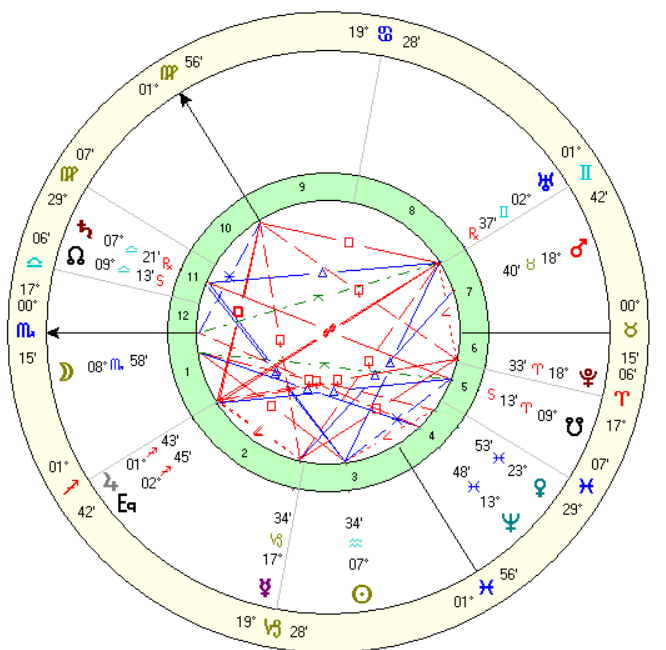In the late '50s and early '60s, Bradley and Firebrace began observing in print several interesting chart examples where the point 90° from Midheaven in right ascension showed an angularity more acutely than Ascendant. (Nothing wrong with Ascendant, but some individual charts showed that this other point was similarly important as well.) I think the first time it had a name (at least in Sidereal literature) was in the July 1964 issue of Spica (Vol. IV, No. 4), in an article by Firebrace titled "Key Points of the Horoscope." (Remember, we have most issues of Spica available for download on this site in the Publications section.) Firebrace wrote:
It was the early '70s before American Astrology started showing this point drawn on charts, marked as an E within a circle (an icon that I still wish we had available to put on our charts). I was used to putting the "East Point" on my charts from very early thanks to Firebrace and (later) Bradley, and I was in on some of the additional statistical work that Bradley and Duncan were doing at the time that was quite interesting. However, I do recall that when Gary told me about that work around 1975, I was already sold: I think he wanted to persuade me of its importance, and persuasion wasn't required.As is well known to students of sidereal astrology we rely mainly for interpretation on planets situated near the 'angles, the horizon and the meridian lines. These appear to be the most important points of the map and planets situated near them appear to produce the maximum effect in events.
There are, however, other possible points which could be potent and some of these we have been studying.
For many years I used to draw map with a form of house division which entailed equal division from the M.C. I had found that the cusp of the first house thus obtained was of definite importance. This first cusp was obtained by adding 90 degrees in longitude to the MC. I have since found that, in my opinion, better results are obtained by adding 90 degrees in Right Ascensi6n to the R.A.M.C. The resulting point has often been called "The East Point." When one says, 'East Point' one must say 'East Point of what?' It is strictly the East Point of the Celestial Equator. This is not necessarily on the ecliptic and, as with the planets, we have to drop a perpendicular to the ecliptic to get its ecliptic position.
In recent experiments with my rectified time for Winston Churchill and in other maps I have found that this East Point is of considerable importance. I can remember that Garth Allen in 'American Astrology Magazine' commented on this point and stated that he had confirmed it statistically and considered it had equal value with the Asc. It is possible to use a system of houses based on this by adding successively two hours of Right Ascension to the R.A.M.C. for each cusp. Such a system has been christened the Axial System [Also called the Meridian house system, e.g., in Solar Fire. - JAE]. Alternatively, the East Point (E.P.) can be simply marked where it falls in the map.
This point was long popular among Siderealists from these early influences. A few years ago, when I was revising typography for publishing, I decided we didn't need the extra keystrokes of splitting this into two capitalized words, so I started spelling it "Eastpoint."







